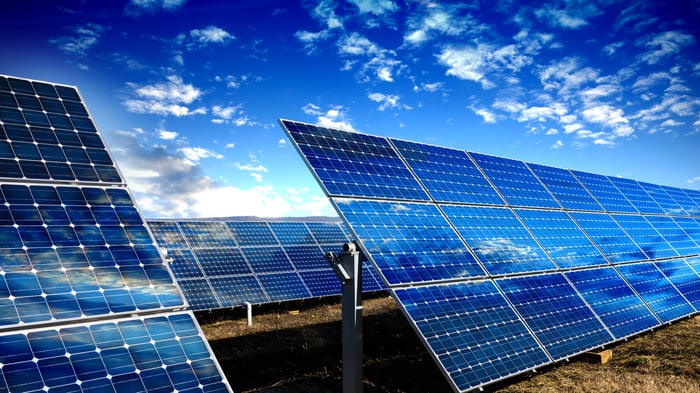SolarEdge Technologies (SEDG -4.68%) stock has risen 230% in 2020 as of this writing. The company's impressive growth combined with investors' enthusiasm for solar power drove the stock's astronomical rise during the year. Solar energy's share in global electricity generation is expected to rise from the current 3% to around 20% by 2050. Even though the market for solar looks promising, can SolarEdge keep up growth in line with its high valuation? Let's see if the stock is a buy for 2021.
Impressive performance
Over the years, SolarEdge has done a great job in growing its customer base. This helped it to deliver an impressive top- and bottom-line performance. It grew its quarterly revenue at an average rate of 38% over the last five years. However, the company's revenue in the second quarter this year fell due to COVID-19, which isn't a major concern considering that other solar companies' revenues were also hit due to the pandemic.
SEDG Revenue (Quarterly) data by YCharts. YoY = year-over-year.
What could be concerning, though, is the fall in SolarEdge's revenue in the third quarter. While top competitor Enphase Energy (ENPH -6.21%) reported third-quarter revenues that were essentially flat year over year, SolarEdge's revenue fell nearly 18% over the year-ago quarter. SolarEdge's commercial installations remained weak during the quarter due to the pandemic. The company expects the commercial segment to remain weak in the fourth quarter as well. I wouldn't see this as a major issue unless revenue remains weak on a sustained basis. The company expects commercial segment sales to recover in 2021, though it hasn't provided a guidance for the year yet.
SEDG Revenue (Quarterly) data by YCharts
With a growing market for solar inverters and optimizers and slightly differentiated offerings, both SolarEdge and Enphase Energy have significant opportunities for growth.
In addition to inverters and optimizers, a key growth avenue for SolarEdge is storage products. The company recently announced a delay of a few months in the launch of its residential batteries due to pandemic-related travel restrictions. However, there might not be much to read here, unless the launch is further delayed.
Electric vehicles could be another major potential market for SolarEdge. The company's products for this segment are currently in the testing stage.
SolarEdge's margins
SolarEdge's gross profit margin averaged around 33% over the last five years. In the longer term, as the market for inverters and optimizers becomes more commoditized, low-cost suppliers may push prices down, affecting SolarEdge's margins. The company is looking at ways to keep its costs low. It has set up a manufacturing facility in Israel, from where it started shipping products to the U.S. in Q3. Products from this facility do not face tariffs like those coming from China.

Image source: Getty Images.
SolarEdge has also set up production facilities in Hungary and Vietnam. It expects 60% of its products to come from non-tariff regions in Q4.
SolarEdge's valuation
Though when compared to Enphase Energy, SolarEdge's valuation looks better, it is still quite high. With a price-to-earnings (P/E) ratio of 93 and a forward P/E ratio of 65, the stock looks pretty overvalued. SolarEdge stock's astronomical rise this year has pushed its valuation higher. Management has already guided for a weaker fourth-quarter performance, so that valuation could become even higher in 2021.
SEDG PE Ratio data by YCharts. PE = price-to-earnings. PEG = price-to-earnings-to-growth.
Weaker third-quarter performance caused the stock to fall in November and had brought down its forward P/E to 43 times. But the stock has recovered since then and is currently trading near its 52-week high.
In the longer term, SolarEdge may see margin pressures affecting its bottom line, and ultimately bringing down its valuation multiple. For that reason, while it's a great stock to hold for the long term, I would wait for a more rational valuation to take a position in the stock.








